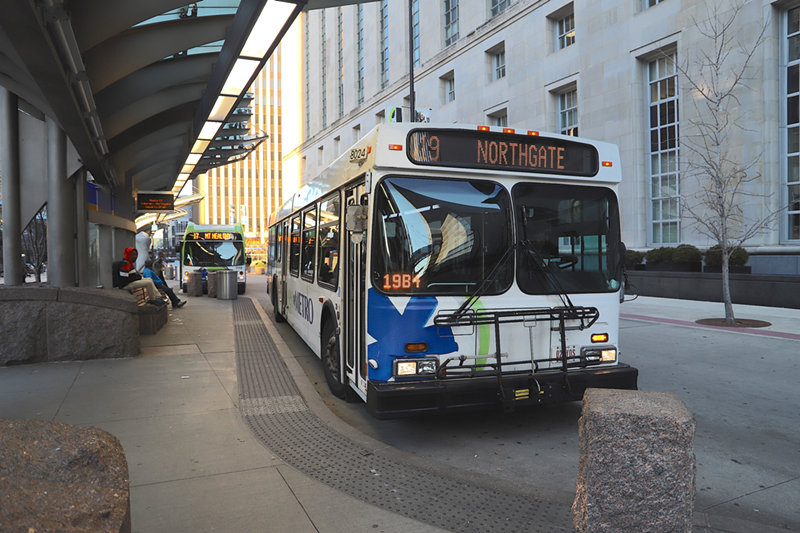The city’s bus service has plans to make riding Cincinnati buses more convenient this summer.
By the end of August, the Southwest Ohio Regional Transit Authority will be updating its Metro bus app, Cincy EZRide, to include more features, such as bus-tracking and more expansive trip-planning across the region, said Brandy Jones, vice president of external affairs for Metro.
Also potentially on the horizon — the ability to catch an Uber or Lyft or rent a scooter or bike through the app.
Only Metro bus routes are currently supported by the app, going as far west as Cheviot, reaching north into Springdale and bringing riders near Coney Island to the east. By partnering with the Butler County Regional Transit Authority, Clermont Transportation Connection and the Transit Authority of Northern Kentucky, SORTA will be updating the app to reach farther, allowing bus riders to plan their trip across the region — even into Northern Kentucky — and pay for it all in one go, Jones said.
This would eliminate the need for multiple bus passes, she said, as everything can be paid for in-app.
The update will also feature bus tracking, allowing riders to watch their bus move in real time, along with an estimated time of arrival, Jones said.
“We’re doing this for the 21st-century rider and ensuring our bus service is seamless,” she said. “We know people live and work across the region and are using multiple transit services.”
Cincinnati City Council adopted a motion January 16 for a “report on the feasibility of partnering with SORTA, Red Bike, Uber, Lyft, Lime, Bird, and other transit options to provide to citizens and visitors a single ‘app’ that allows people to see all of their transportation options and the ability to select and pay for a trip that might include more than one of these options.”
Development of the update is still in its early stages and a third-party developer has yet to be chosen. Metro is currently in talks with rideshare companies, Jones said, but no decisions have been made yet.
Cam Hardy, head of the city’s Better Bus Coalition, said he is happy with a technological upgrade as its convenience will likely draw in more bus riders, but has reservations about rideshare companies being added to the app.
“The transit agency shouldn’t be spending my tax dollars to prop up private organizations such as Lyft and Uber,” he said. “Being a one-stop shop, I can see the usefulness of it, but the idea of Lyft and Uber rubs me the wrong way.”
City Council member Greg Landsman, who submitted the motion with member Tamaya Dennard, said the integration of rideshare apps could make traversing the city easier for those looking to use multiple services.
“As opposed to saying ‘I’ll just take Uber,’ it looks like I can walk one block, pick up the bus, take that to this Red Bike station and then bike the rest of the way,” he said.
Use of the city’s bus system has declined over the years. There were more than 26 million riders in 2008; that number dropped to 15 million in 2016, according to The Hamilton County Better Bus Plan by the Better Bus Coalition.
The current app has about 40,000 users, Jones said, and she predicts the update will encourage even more people to download.


